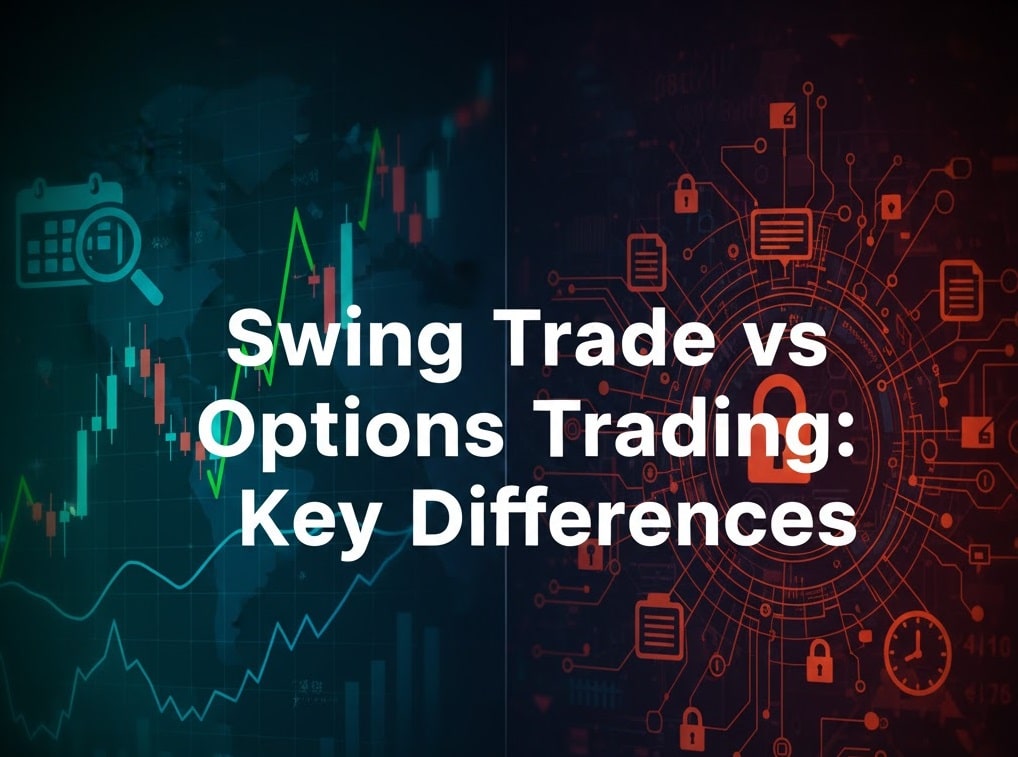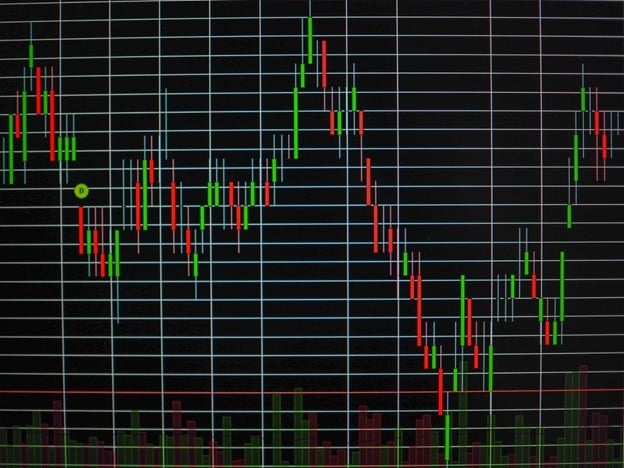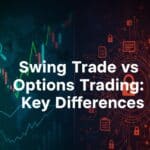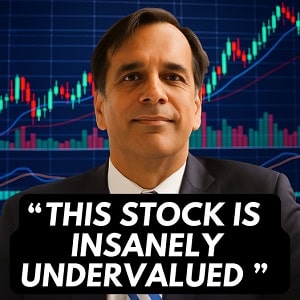Trading isn’t one-size-fits-all. Among the many strategies that active investors employ, swing trading and options trading stand as two of the most popular and powerful. Each provides a path to growing your portfolio, but their mechanics, risk profiles, tools, and opportunities are fundamentally different. By understanding the core differences and use cases for swing trading versus options trading, you’ll be equipped to decide which approach is right for you—or how to skillfully blend both in your investing journey.

What is Swing Trading?
Swing trading is a style of trading designed to capture gains from price swings—upward or downward—in an asset over a period ranging from several days to several weeks. Unlike day trading, where positions are usually closed by the end of each trading session, swing traders are comfortable holding their positions overnight, sometimes even over weekends and through certain news events if their market analysis justifies it.
The essence of swing trading is built on the expectation that market prices move in waves. Whether the prevailing trend is up or down, there are always minor counter-trends, corrections, and breakouts. Swing traders use technical analysis, such as chart patterns, candlestick signals, moving averages, and momentum indicators, to spot points where a fresh move is beginning or a temporary pullback is ending. Entry and exit points are determined with the aim of capturing a significant portion of a move, rather than trying to catch every tick.
Swing trading can be applied to a variety of assets—including individual stocks, ETFs, cryptocurrencies, or even commodities—depending on liquidity, volatility, and overall technical setup of the chosen instrument. Compared to day trading, swing trading typically requires less screen time, making it a favorite among those who want to retain daily flexibility or manage trading alongside a full-time job. However, swing traders must remain vigilant, as holding positions through earnings, news, or unexpected events exposes them to overnight and gap risks, where a security’s price may jump or fall significantly when the market reopens.
To succeed, swing traders build and follow well-researched trading plans, respect pre-set stop losses, and keep emotions in check. They must also adjust strategies for various market conditions, such as trending, range-bound, or highly volatile phases, always testing which setups produce the best results in the current environment.
What is Options Trading?
Options trading is often considered the advanced playground of the financial markets, yet it is accessible to anyone willing to learn. Options are derivative contracts based on underlying assets such as stocks, ETFs, indices, or commodities. Rather than buying or selling the actual asset, options traders buy the right, but not the obligation, to purchase (call option) or sell (put option) the underlying at a specified price on or before an expiration date.
Unlike simple long or short positions, options trading provides enormous versatility. It’s possible to profit from upward moves, downward slides, sideways trends, or even times when you expect very little movement at all. Options allow you to use leverage, meaning you can control a large position with less capital up front. For example, buying one call option often controls 100 shares of stock, amplifying both the profit and loss potential compared to buying the stock outright.
Options trading requires mastery of unique concepts such as “the Greeks”—Delta, Gamma, Theta, Vega—which measure factors like price sensitivity, time decay, and implied volatility. Complexities can quickly multiply when managing multi-leg positions such as spreads, straddles, strangles, condors, and butterflies, but these strategies are precisely what enable options traders to tailor trades for every conceivable market scenario.
Options are also employed as risk management tools for hedging an existing position, for example, by buying protective puts to insure against a downturn. Many income-focused investors use strategies such as selling covered calls or cash-secured puts to collect premium, effectively renting out their shares or agreeing to buy stock at a discount while collecting income in the meantime.
But options are not without risks: if not managed carefully, they can lead to rapid and substantial losses, especially when selling “naked” options (with no corresponding asset holding), as losses can be theoretically unlimited. Therefore, solid education and prudent position-sizing are absolutely critical for sustainable success.
The Mechanics of Swing Trading
Delving deeper into the mechanics, swing traders start by scanning the markets for potential setups, often during or after market hours. They analyze charts to identify formations such as ascending triangles, double bottoms, flags, pennants, or simple support and resistance zones. Volume analysis, moving average crossovers, and momentum indicators like the Relative Strength Index (RSI) or MACD frequently figure into their trade confirmation process.
Entry is typically made when price action confirms the anticipated move—such as a breakout above resistance, a bounce from a moving average, or the failure of a counter-trend pattern. Each position is established with a clear stop loss, chosen either as a percentage of capital risked or at a logical technical level. Exits are determined by pre-identified profit targets, trailing stops that lock in gains, or reversal signals in price or volume that suggest the swing has played out.
A disciplined swing trader reviews trades for lessons learned, continually tweaks their methodology, and adapts position size to volatility and conviction in their setup. Swing trading, though less frantic than day trading, is still fast-paced compared to traditional buy-and-hold investing, and it requires agility, patience, and a robust emotional framework to withstand rapid swings in both directions.
The Mechanics of Options Trading
Options trading starts with a thesis—not just directionally (will the asset rise or fall?) but considering magnitude and timing as well. The trader chooses a strategy based on their market view; for example, if anticipating a sharp move upward, they might buy call options or construct a bull call spread. If expecting consolidation and lower volatility, they might sell strangles or condors to collect premium as time ticks by.
Once a strategy is selected, the trader reviews the options chain for the underlying ticker, analyzing bid-ask spreads, open interest, volume, and the Greeks for their chosen contracts. Key decisions include strike price selection (in, at, or out of the money), time to expiration (weekly, monthly, or LEAPS for longer-dated exposure), and risk management structures (single-leg, multi-leg, debit or credit spreads).
After placing the trade, options traders must constantly monitor both the price of the underlying and critical time value decay (Theta), as option premium melts away as expiration approaches. Volatility changes can also dramatically affect position value—sometimes benefitting the trader, sometimes working against them.
For example, a call option purchased ahead of an earnings announcement might gain in value not only because the underlying rallies, but also because implied volatility rises into the event. But once the earnings pass and volatility collapses (known as “vol crush”), even a correct directional bet can suffer losses if premium decays more than anticipated.
Experienced options traders sometimes dynamically adjust positions by rolling strikes and expirations, closing positions early, or hedging with additional options contracts to manage new risks as market conditions evolve.
Comparing Risk, Return, and Complexity
Swing trading offers moderate complexity. Success depends on correctly interpreting technical patterns, understanding market trends, and precisely timing entries and exits. Risks are relatively straightforward—generally capped by stops and determined by the distance between entry and stop, multiplied by position size. Losses can happen when patterns break down, gaps occur overnight due to news events, or if stop losses aren’t properly honored.
Profit potential is robust in trending or volatile environments, provided the trader avoids whipsaws or “chop.” But swing trading capital requirements per position are typically higher compared to trading options, since each share must be bought or sold outright, unless margin is used.
Options trading, on the other hand, is intrinsically more complex. Profits and losses hinge not only on the price direction of the underlying asset, but also on timing, volatility, and the actual behavior of the underlying versus anticipated outcomes. The potential for high leverage means both gains and losses can be outsized compared to the same amount of capital risked in swing trading. For example, a well-timed options trade can deliver 200%–500% gains in a few days, but the same trade can expire worthless if movement doesn’t materialize or comes too late.
The complexity is compounded by the multitude of strategies and the requirement to understand how options premium is affected by time decay (Theta), movement in the underlying (Delta), rapid price shifts (Gamma), and shifts in implied volatility (Vega).
Practical Scenarios
Imagine you believe that shares of Apple are about to rally from a strong technical support level following a dip. As a swing trader, you might buy the stock outright, risking 2% on the trade, and set a target based on recent highs. If Apple moves as you expect, you capture a 6%–10% move in a week, profiting directly from the difference between purchase and sell price.
As an options trader, you could instead buy call options. If Apple rises quickly, the value of your call increases not only from the price movement but also from any increase in implied volatility—returning far more percentage gain than owning stock, for the same-sized risk. But if Apple is slow to move, your option may stagnate or decay, and if the move comes after the expiration date, your contract could expire worthless.
Alternatively, suppose you anticipate a large move in Tesla after an earnings announcement, but do not know the direction. As an options trader, you might implement a straddle—buying both a call and a put at the same strike price—profiting if Tesla’s move is sufficiently large in either direction to offset the cost of both premiums, regardless of whether the stock spikes up or down.
Understanding Leverage
Both swing and options trading offer forms of leverage, but of very different types. In swing trading, leverage can be attained by trading on margin, borrowing funds from your broker. This amplifies your buying power and potential gains—but also your losses, as you must repay the borrowed capital regardless of performance.
Options offer intrinsic leverage. For a fraction of the price, you control a much larger notional position. Options leverage, however, is a double-edged sword; while it greatly multiplies profit potential, it does so with risk that the entire premium can be lost if the bet is wrong or poorly timed.
Choosing the Right Trading Style
The decision between swing trading and options trading depends heavily on your personal goals, risk tolerance, investing experience, time commitment, and preferred complexity. Swing trading is typically favored by those who want a clear technical approach to the market, moderate holding periods, and simpler trade mechanics. It appeals to those who prefer direct exposure to assets, less leverage than options, and less intensive need to master mathematical concepts.
Options trading is ideal for traders who are comfortable with complexity, thrive on strategic flexibility, and want to capitalize on not just direction, but also volatility and time. Options empower traders to hedge, speculate, or create income streams with various strategies, but also demand a disciplined approach and respect for the risks associated with leverage, assignment, or early expiration.
Strategy Development: A Deeper Dive
Swing trading strategies center on market structure, charting, and relative strength. They may include buying at ascending support after a bullish engulfing candle, or selling at resistance as RSI signals overbought conditions. Some swing traders use sector rotation, such as focusing on energy stocks during an oil price surge, or biotech shares ahead of regulatory approval announcements.
For advanced swing traders, strategies can also incorporate sentiment analysis, macroeconomic data, and combinations of correlated asset classes. Successful swing traders adapt their positioning size, stop loss placement, and targets based on current conditions.
Options traders develop more intricate strategies. For example, consider a bull put spread—in which a trader sells a put at a higher strike and buys another put at a lower strike to limit risk. This rewards the trader if the asset stays above the sold strike at expiration. Or, a trader expecting high volatility but uncertain direction may buy a strangle, betting on a large move either way.
Options traders often “roll” positions—closing out existing contracts and opening new ones to capitalize on evolving probabilities. Automation platforms, sophisticated analytics tools, and scenario modeling play a big part in options strategies.
Managing Emotions and Psychology
Both swing and options trading can be demanding emotionally. Swing traders must resist the urge to overtrade, especially after losses, and be patient enough to let good setups play out. They are challenged by drawdowns and “false breakouts,” which can test confidence.
Option traders face unique stressors: the ticking clock of time decay, complex position monitoring, and sometimes sudden swings in position value. The adrenaline of fast gains must be balanced with calm risk assessment, as overleveraging can wipe out accounts. Developing a trading journal, reviewing past trades, and sticking to risk limits is essential for long-term viability in both arenas.
Monitoring and Adjusting Your Strategies
Active traders know that markets are continually evolving. What worked during a trending bull market may be ineffective during choppy or high-volatility environments. Swing traders adjust by seeking setups in the strongest names or expanding their universe to include inverse ETFs, small caps, or global markets.
Options traders may shift from buying options outright during quiet markets to credit spreads or iron condors during range-bound conditions, or hedge with collar strategies when anticipating volatility spikes.
Both types of traders should regularly review performance, analyze win/loss rates, gauge average holding periods, and seek ongoing education through books, webinars, and courses.
Conclusion
Choosing between swing trading and options trading—or designing an approach that incorporates both—depends on your goals, knowledge, and appetite for risk and complexity. Swing trading brings market action and pattern recognition together for solid, repeatable results over weeks or days, while options trading unlocks multi-dimensional strategies to profit from price, time, and volatility, but with greater sophistication and leverage.
Success in either style comes from solid education, a well-crafted plan, ongoing adaptation, emotional resilience, and disciplined risk management. Start small, commit to ongoing learning, and refine your strategy as you grow—your pathway to trading mastery is just beginning.
Frequently Asked Questions (FAQ)
Can I practice swing or options trading before risking real money?
Yes, many brokerages offer simulated or paper trading platforms to build skills risk-free.
Is one approach less risky for beginners?
Swing trading typically offers a gentler learning curve, but options trading can be done with defined-risk strategies such as spreads.
How do taxes work for profits from these trading styles?
Both options and short-term swing trade profits are generally taxed as ordinary income; consult a tax advisor or broker for specifics in your region.
Do I need technical analysis for both styles?
Technical analysis is foundational for swing trading and helps timing for options, but options traders must also master pricing models and volatility analytics.
How much time do I need to devote each week?
Swing trading may require 1–2 hours daily, mainly after markets; options trading varies, with some strategies needing intraday attention.
What if my trade moves against me overnight?
Swing traders use stop losses and position sizing to limit risk. For options, defined-risk strategies and close monitoring are key.
Should I use margin for swing or options trading?
Margin is best reserved for experienced traders. With options, margin is required for selling “naked” contracts, which can be especially risky.
Can I hedge my investments with options while swing trading?
Absolutely. Puts can protect against downside in stocks, or you can offset risk through spread positions.
Do professionals combine both approaches?
Many advanced traders blend swing and options trading—using options for leverage, hedging, or income while swing trading stocks and ETFs.
Where can I learn more about these strategies?
Resources like the CBOE, investopedia, online trading academies, and reputable YouTube educators are invaluable for deepening your understanding.




































